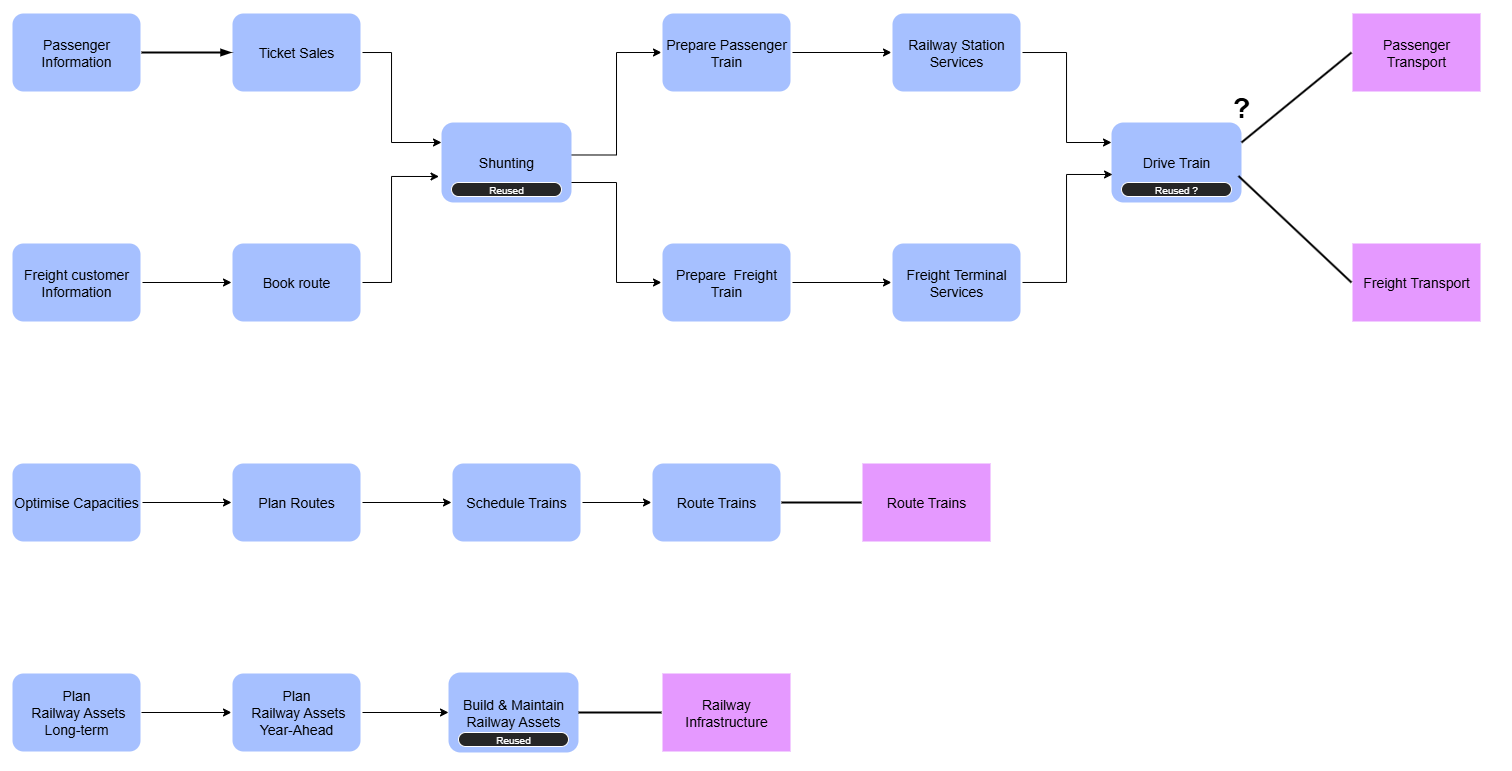No edit summary |
No edit summary |
||
| Line 18: | Line 18: | ||
Is it possible to extend a team’s skills or capacities to enable it to perform a shared [[capability]]? | Is it possible to extend a team’s skills or capacities to enable it to perform a shared [[capability]]? | ||
<br><br> | |||
''<u>Example: Intersection Railways</u>'' | ''<u>Example: Intersection Railways</u>'' | ||
<br><br> | <br><br> | ||
Revision as of 10:43, 2 September 2025
Capability Modeling Guidelines | How to Structure a Capability Map
Identify Capabilities that can be Reused Across Processes
Starting with “going with the flow” as the first step in identifying core capabilities typically leads to process-aligned capabilities and, as a consequence, process-aligned organisations. This approach optimises your architecture for the efficiency of core processes.
The problem with a purely flow-aligned architecture, however, is that the more you optimise for flow, the less adaptable your company becomes. The reason is that the same capabilities are often required in multiple processes. If you don’t reuse those activities across processes, you waste money, lose the benefits of specialisation, and reduce the overall adaptability of the enterprise.
To design enterprises that are both efficient and adaptive, you need to complement the flow-based approach with the idea of non-overlapping, organic modules by identifying capabilities that can be reused across your initial product-creation flows.
Practical Tips
Search for assets that can be reused.
If you drill down, can assets (such as facilities, machines, or IT applications) be shared between two capabilities required to deliver different product groups? If so, does it make sense to merge them into a single shared capability across product groups?
Develop people’s skills that enable the performance of shared capabilities.
Is it possible to extend a team’s skills or capacities to enable it to perform a shared capability?
Example: Intersection Railways

After discussions with the relevant business experts, you conclude that “Shunting” is so similar between freight and passenger transport that you model them as a single capability. Only a few adaptations are needed for the existing shunting station to do both - the composition of freight and passenger trains.
The locomotives of passenger and freight trains are different, and only 20% of train drivers of Intersection Railways are trained to drive both. Are the synergies we can lift when designing “Drive Train” as a single Capability big enough to justify the effort of educating the other 80% of train drivers in order to drive both types of locomotives? For now, we decide to leave this as an open question for later, when we dive into the more detailed capability modeling.